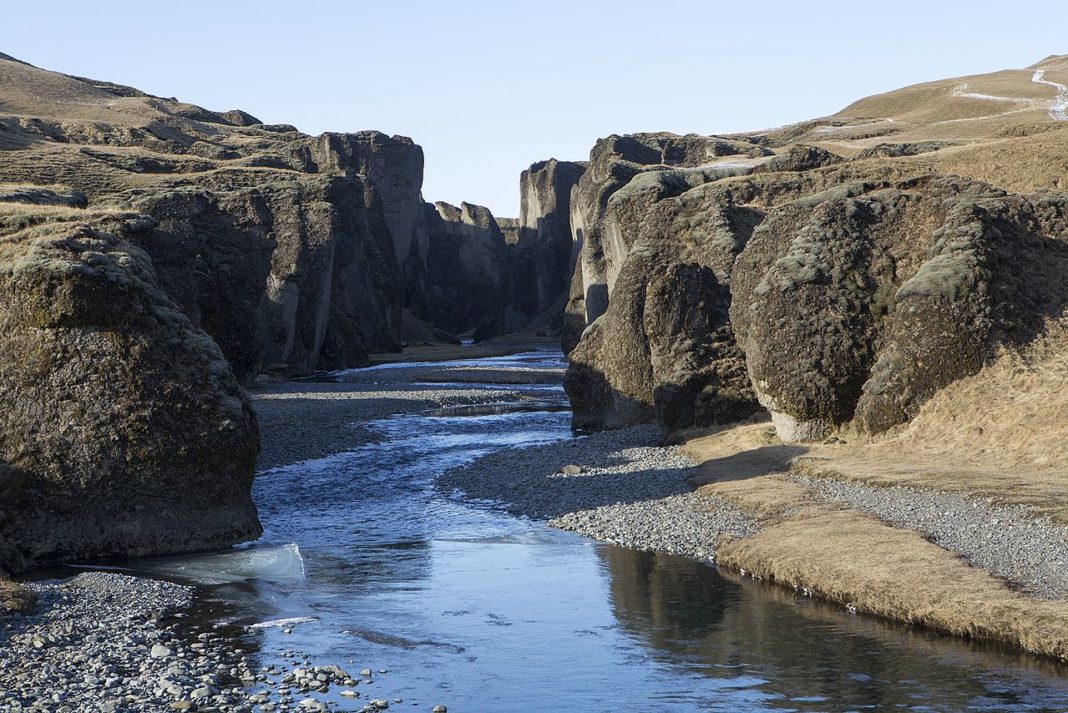Fjaðrárgljúfur is a magnificent and massive canyon, about 30 meters deep and about two kilometers long. The canyon has sheer walls and is somewhat serpentine and narrow. The bedrock in Fjaðrárgljúfur is mostly palagonite from cold periods of the Ice Age and is thought to be about two million years old.
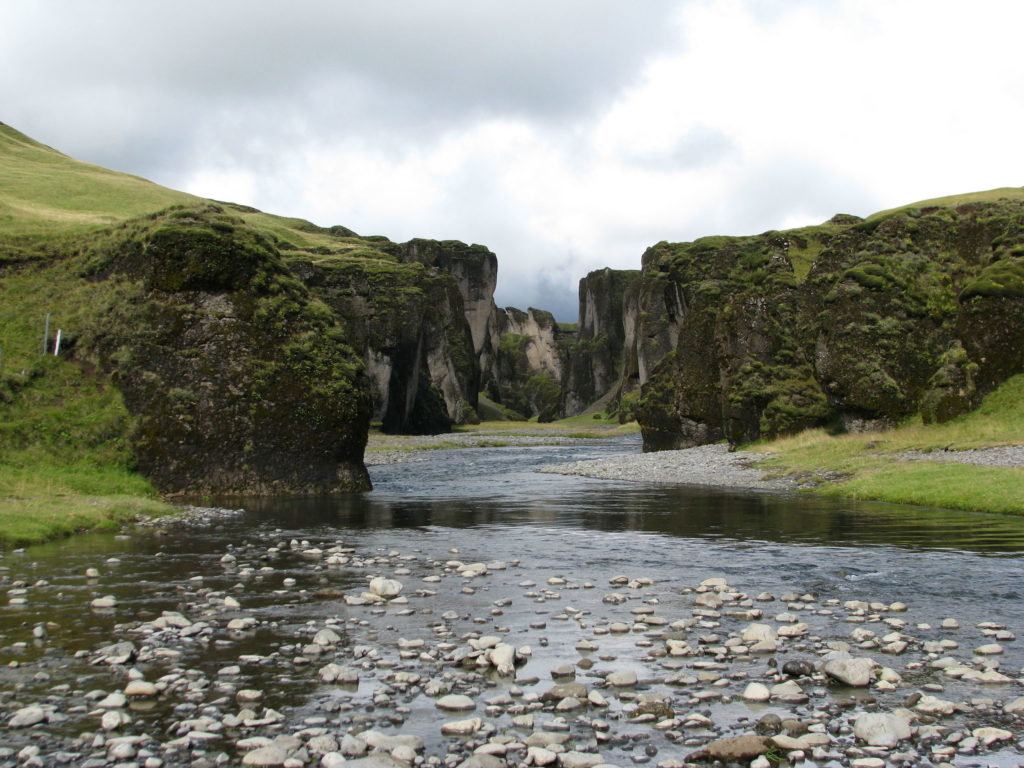
The landscape is impressive and the colors are astonishing: the green of the grass, very pronounced in this region, contrasts with the black of the rocks and the sometimes turquoise blue of the Fjaðrá, a river that precisely crosses Fjaðrárgljúfur.
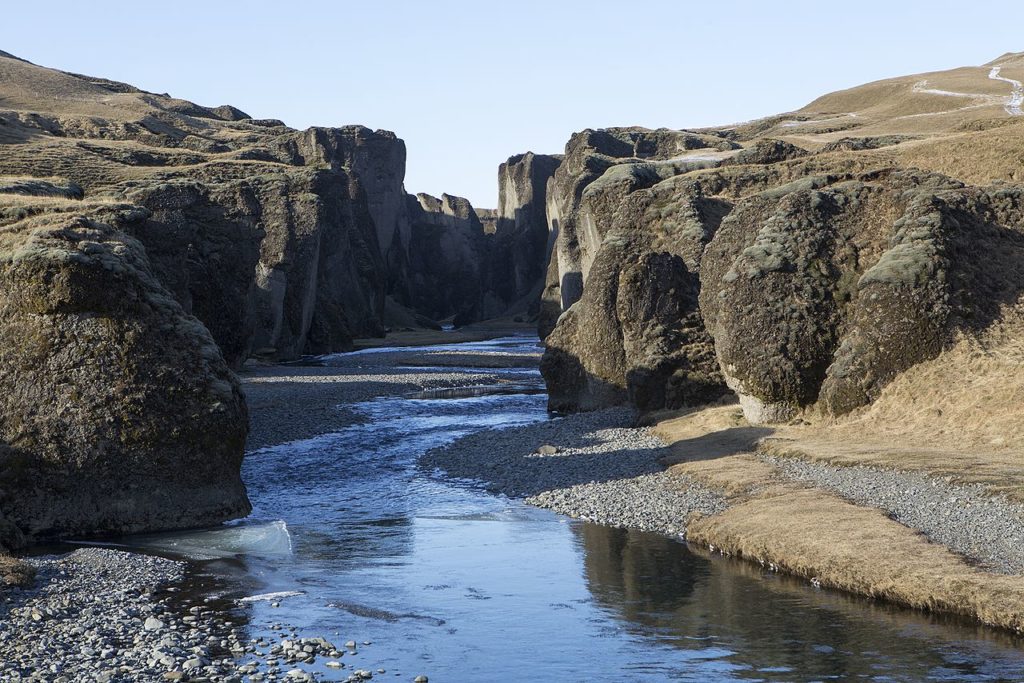
It is believed that Fjaðrárgljúfur formed at the end of the last Ice Age, about nine thousand years ago. When the glacier retreated, a lake formed in the valley behind a hard resistant rock. The run-off from the lake flowed to where Fjaðrárgljúfur is today. Glacial rivers from the glacier’s edge carried a lot of sediment into the lake and the river which ran from it dug itself down into the rock and down onto the palagonite in front of it. Because the cascade has been so large, it was powerful in digging out the canyon. Eventually, the lake filled with sediments, and the river’s strength dwindled. When the lake filled up completely, the river began to dig itself into the sediment layers which it had previously left in the valley.
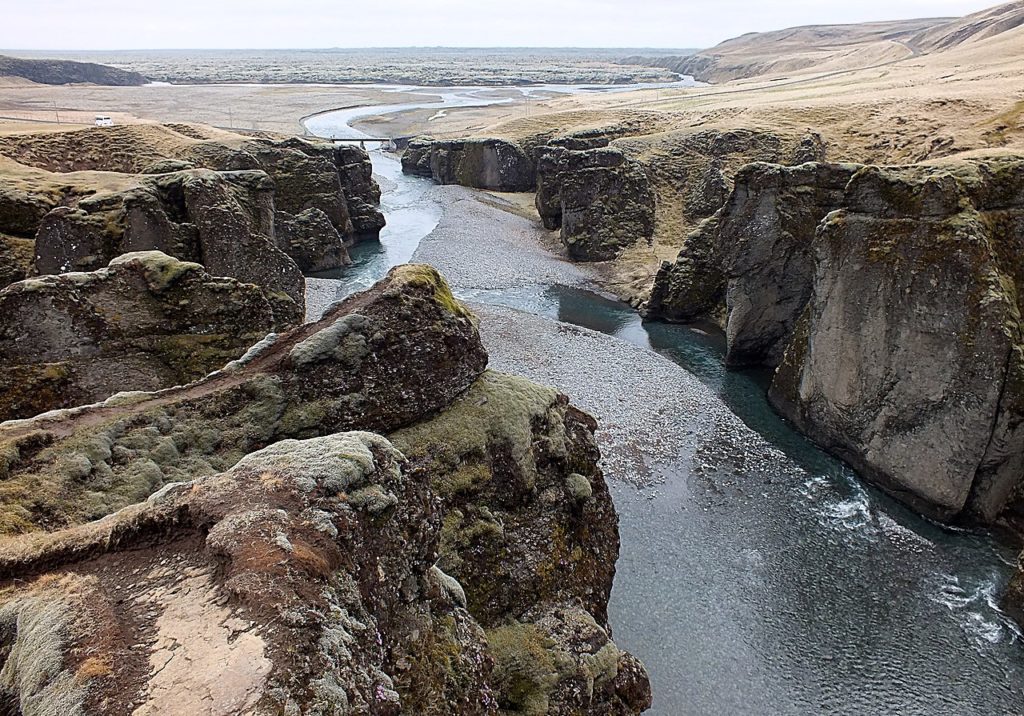
At the head of the canyon is a beautiful little waterfall. A metal platform takes you out over the canyon where the Möga river meets the Fjadra river with a third smaller river joining the mix. Look down over the edge of the final platform and you can see the watercolors from the three rivers merging in an ever-changing mix of colors.
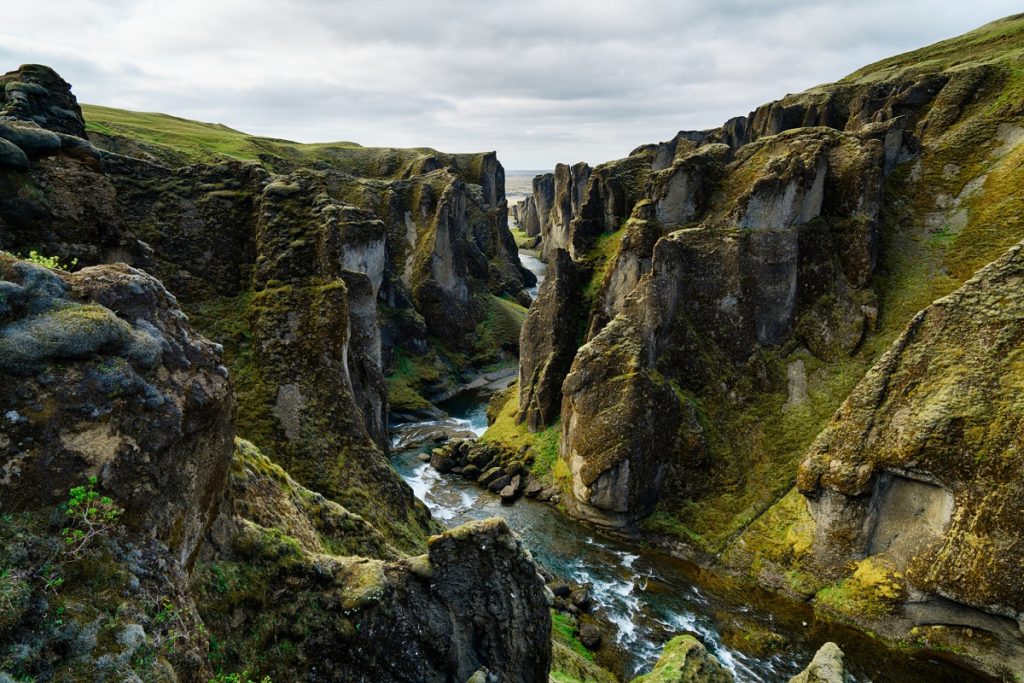
Access to the canyon is generally possible all year round, in winter and summer. Of course, in winter everything will depend on the condition of the roads, but access is mostly open.
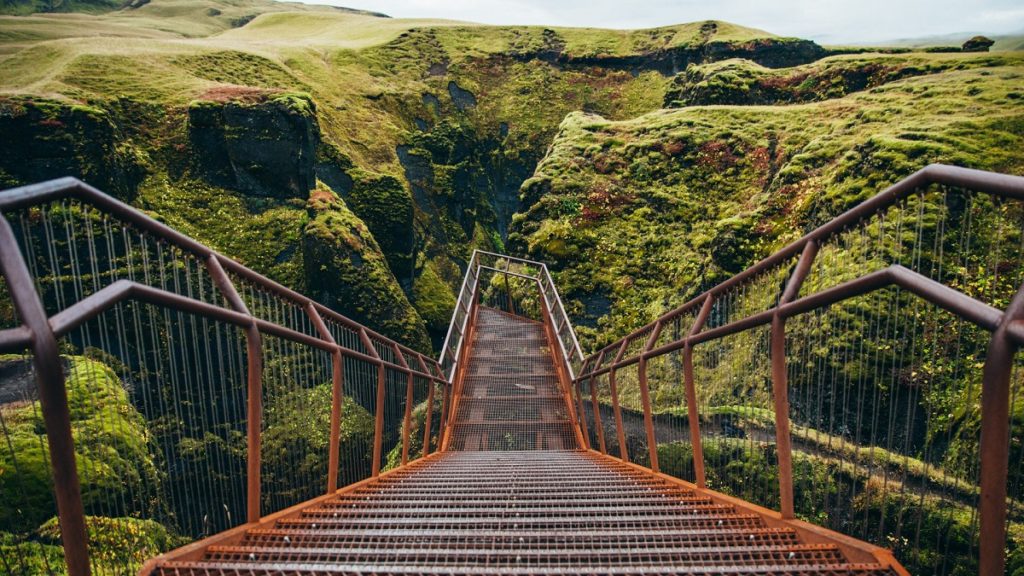
According to the Internet





